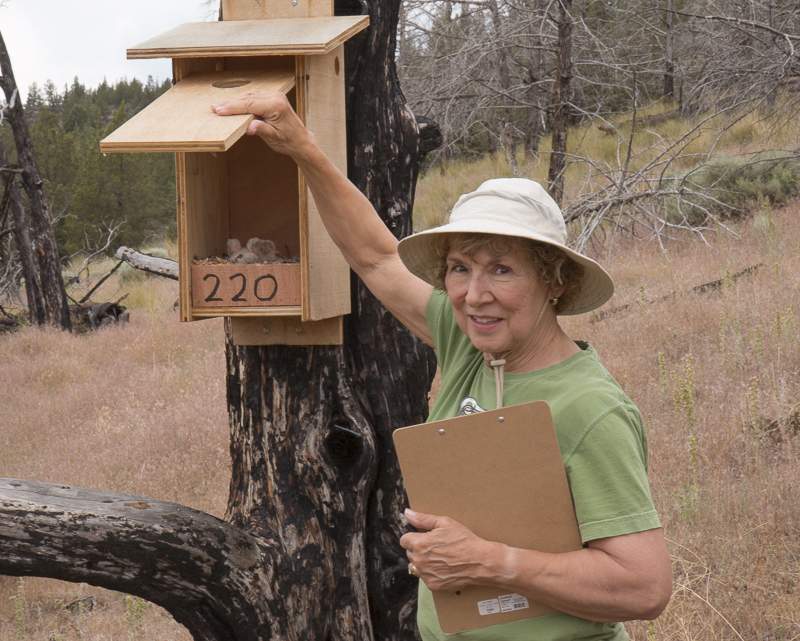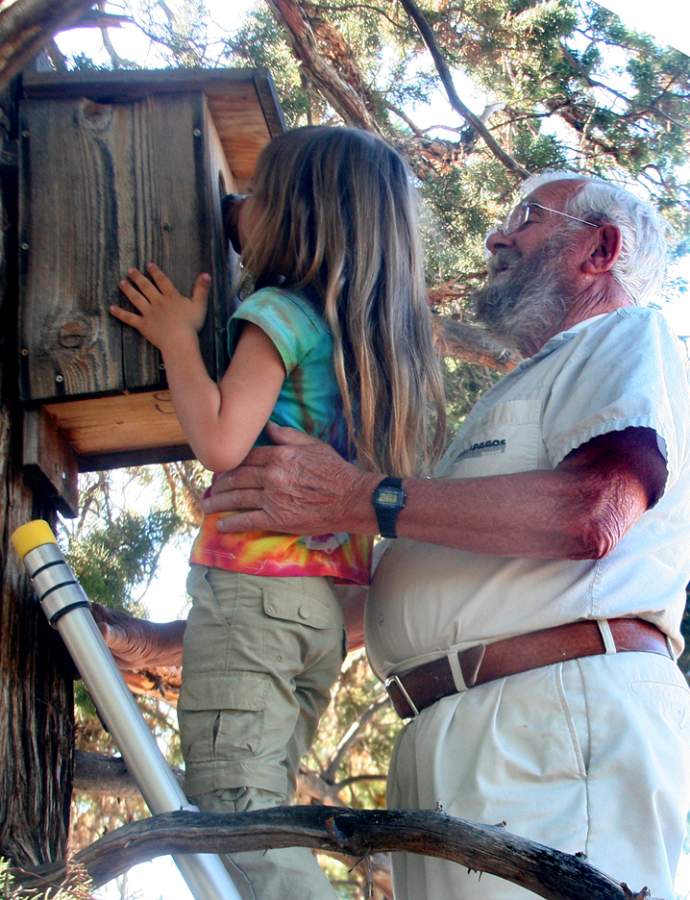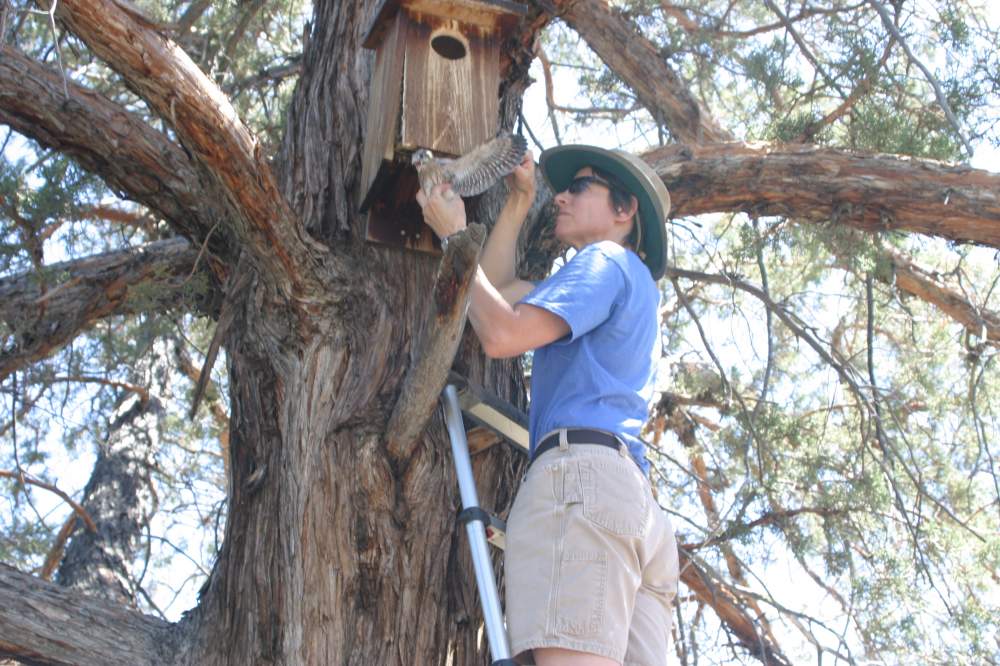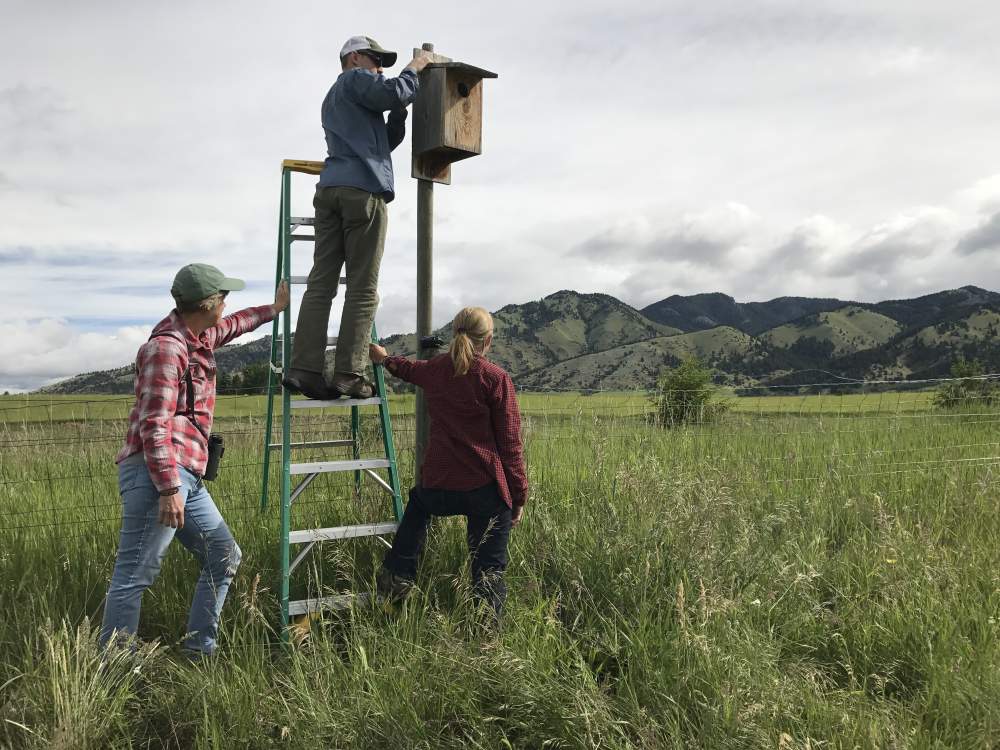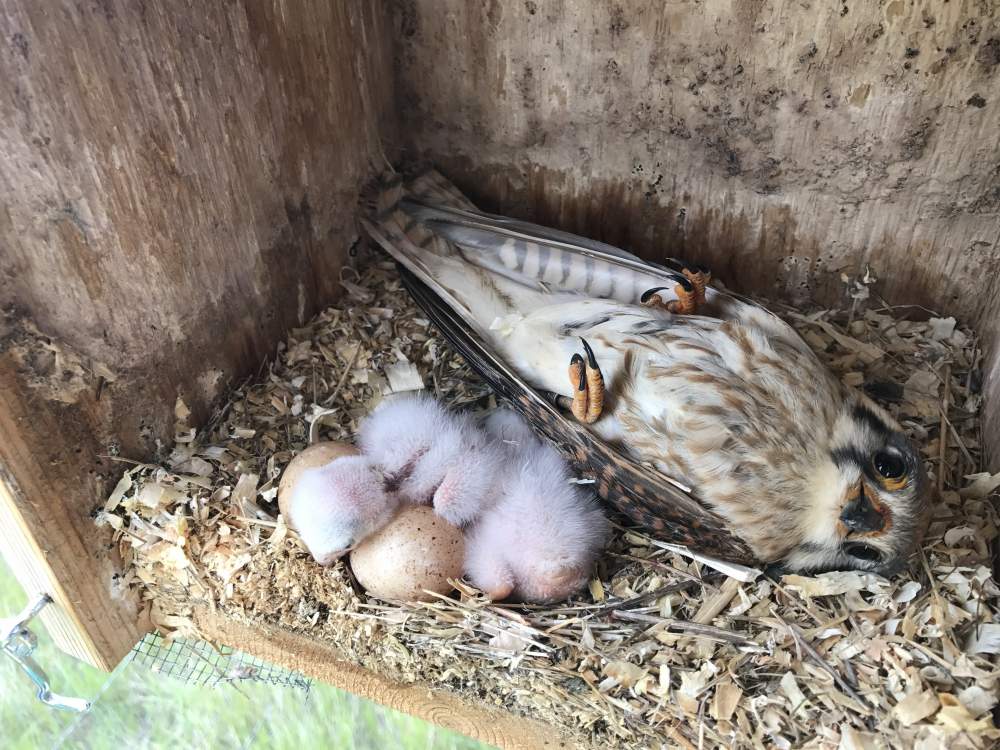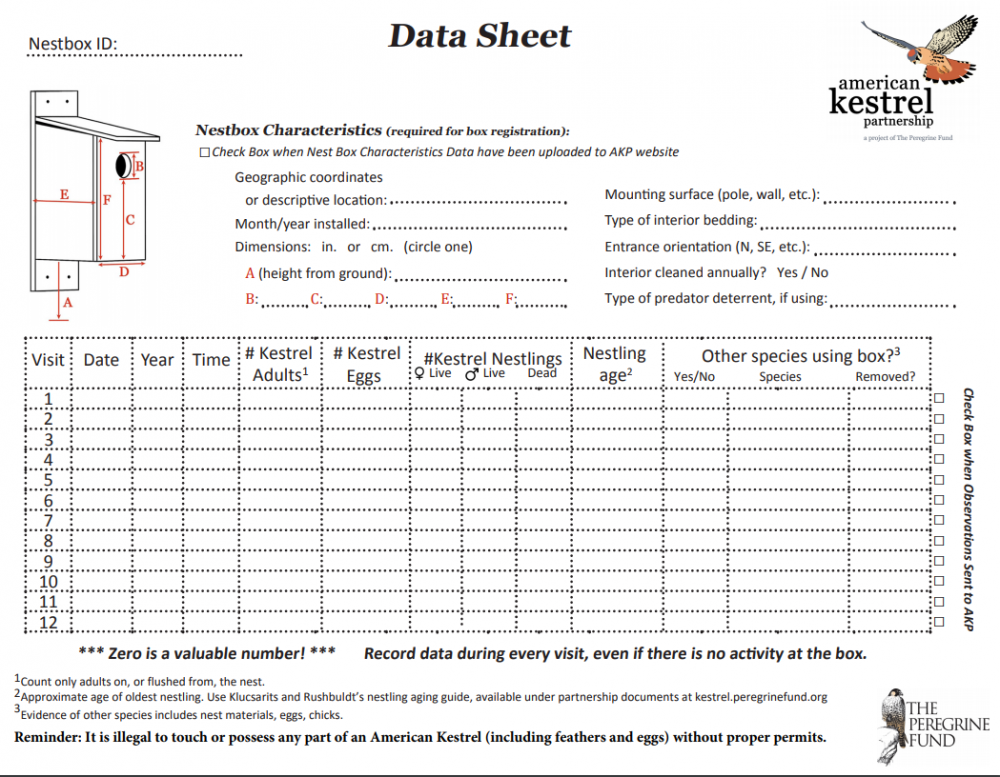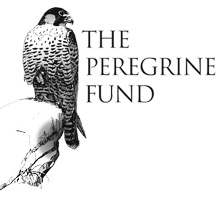Installing and Monitoring a Nest Box
If you are interested in installing a nest box with the intention of helping kestrels, you've come to the right place! Research shows that nest boxes aren't a golden ticket to American Kestrel conservation. That is, installing nesting boxes isn’t necessarily going to help declining populations if their decline is caused by something other than nest site limitation. However, since the cause of kestrel decline is still unknown, data from nest monitoring programs are extremely valuable to helping us uncover the mysterious causes of these declines.
Once we understand the causes, we will be able to make management recommendations that do help kestrels! We’ve included information, protocols, and data sheets below to ensure that your efforts will help the kestrel cause. Once you are registered as an AKP partner, you will be able to enter your Nest Record and Observation Data into AKP’s centralized database.
Why Monitor?
Monitoring kestrel box activity is arguably a more critical step than installing boxes when it comes to helping kestrels!
While it might seem like putting up a box could only help, our research has shown this isn't the case. It is surprisingly easy to place a kestrel box too close to stressors such as busy roads, outdoor cats, the territories of predators such as Cooper's Hawks or Great Horned Owls, or other stressors. If a box is being regularly disturbed (or worse, predated), these so-called "bad boxes" will have a notably lower-than-average nestling survival rate than other nests in the area—which means installing these "bad boxes" can actually REDUCE the local kestrel population. If you find that your box results in repeated nest failures, you might have a "bad box" and should strongly consider removing or relocating it!
Inputting your data consistently is equally important. By submitting your observations to our database, you ensure that your time, energy, and resources help not only the kestrels in your box, but all kestrels everywhere. And you should still submit your observations even if kestrels don't use your box! Regularly monitored boxes give researchers valuable information regarding kestrel biology, phenology, and reproductive activity, but much of this information (such as box selection preferences, the prevalence of interspecific competition events, and more) simply cannot be gleaned from occupied box data alone. Consistently monitoring your box according to AKP’s basic protocols and reporting your data will help biologists answering local, regional, and continental-scale research questions. Additionally, submitting data from your box(es) even if you don't have kestrel tenants lets us know that you're still active as a partner and that we don't need to recruit new partners in your area!
